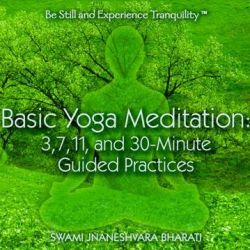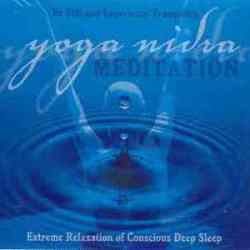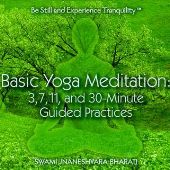|
|
Om Namah Shivaya Om Namah Shivaya (Panchakshara Mantra, five syllables) is a most potent and popular mantra, which is at the heart of the Vedas and Tantra, and is widely used in this and other variations in the Himalayan tradition, as well as by others. While there are other descriptions of the mantra, the following focuses on meanings for mantra meditation leading to Self-Realization. OM/AUM: The three parts of Om (A-U-M) encompass the three states of waking, dreaming, deep sleep, the three levels of gross, subtle, causal, and the three levels of conscious, unconscious, subconscious, as well as the three universal processes of coming, being, and going. Absolute silence beyond the three levels is the silence after AUM. It also refers to Tripura, the one who live in the "three cities" as in Mahamrityunjaya Mantra, as well as the light referred to in Gayatri Mantra.
Namah/Namaha: Adoration, homage, respect. Nothing is mine (as an individual person); everything is thine (as the Absolute Reality). The three levels of Om, the three worlds of gross, subtle, and causal, along with the three states of waking, dreaming, and deep sleep states of consciousness, as well as the three levels of conscious, unconscious, and subconscious themselves are "not mine" as the true properties of who I really am. Truly, "nothing is mine." Rather, everything, all of these triads is "thine" or the "other" as the Absolute Reality. Shivaya/Shiva: That Absolute Reality that is the ground out of which the others emerge. It is that "ink," so to speak, that is not separate from the many forms which may appear to manifest or be created from that ink. In the Realization of this, one comes to see that he or she is one and the same with the Absolute Reality. The Mahavakyas, the great utterances, are seen to be true. Shiva (the static or ground) and Shakti (the active or creative) are seen to be one and the same. She (Shakti), while one with Shiva is realized in direct experience as the one in the three worlds (Tripura) outlined in Om.
The Five Sacred Syllables: The Om Namah Shivaya mantra has five syllables: na-mah-shi-va-ya (sometimes called six syllable mantra by including Om). Thus, Om Namah Shivaya mantra is called five-syllable mantra, or Panchakshara Mantra (panch means five). Among other things, these five represent the five elements of earth, water, fire, air, and space. Thus, the Om Namah Shivaya mantra leads awareness in the reverse order from manifestation back to the source from which manifestation arose.
40 day practice The period of 40
days has been widely recognized as an auspicious period both in
the East and the West since ancient times. A traditional way to do
an extended practice of Om Namah Shivaya mantra is to choose a number of repetitions
per day
A mala is a set of counting beads with 108 beads. Only 100 are counted, with the other 8 considered an offering to the divine, however you personally hold that. You might choose to do 1, 2, 3, 4, or more rounds of 108 mantras per day, counting with a set of mala beads. It has been said that there is freedom in discipline; choosing to do a regular practice frees the mind from wondering what practice will be done that day. It is also important not to do the mantra practice with rote repetition, but rather, with feeling and awareness. By running your own experiment for 40 days, you can decide for yourself whether or not the practice of Om Namah Shivaya mantra is beneficial. Extended practice A noticeable level of mantra siddhi (power of the mantra) is said to come with 125,000 repetitions of a mantra (Such an extended practice is called a purascharna). This is equivalent to 1250 rounds of a mala. Such an extended practice with Om Namah Shivaya mantra can have a tremendous effect in stabilizing the mind in preparation for advancing in meditation. Such a practice simply must be done personally to understand the benefits. It does take quite a commitment to do this practice every day for such a long period, but it is well worth the effort. In choosing the level of practice per day, it is important to have stability from one day to the next, and to not skip any days. It is best to choose the level that works for you consistently, rather than changing the number from day to day. For example, if two rounds per day is a good number, then it's better to stay with that amount each and every day, not to do none on one day, but four on the next day.
-------
|
|
||||||||||||||||||




